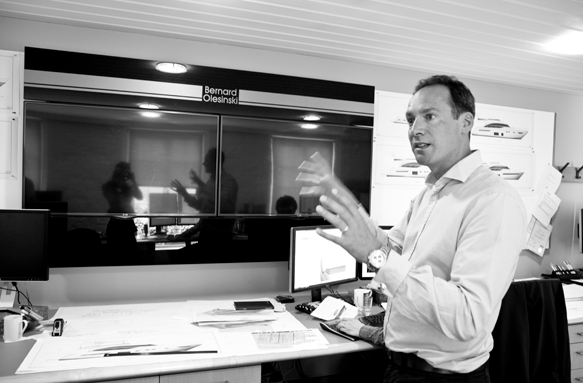By SuperyachtNews
22 Jun 2018
Demanding times for design
What are the changes in superyacht design spheres, and is today's world of superyacht design very different to what it used to be?

Justin Olesinski, CEO, Olesinski, has worked in the superyacht industry for over 20 years. Next week, he will take part in the panel 'Designers Q&A' at The Superyacht Design Forum next week. Here, he discusses how the superyacht design world has evolved...
At a recent conference, I heard the quote “Change will always occur but the rate of change will always increase”. In a world where our goal as designers and naval architects is to launch a unique and hopefully iconic yacht, the idea that we can forever improve and design more superyachts within the same timescales initially appears both daunting and impossible. But somehow our industry does achieve evermore spectacular feats and bigger launches.
Intrigued, I decided to investigate how we have managed to maintain this unprecedented development of such complex, expensive products, and some of the main changes that have been happening within design studios and those involved with them.
Perhaps the most striking change over the years has been in the size of the studios. Only a few years ago, naval architects, interior designers and exterior designers would often work alone or in offices with two or three like-minded individuals. The few who were around at the start of the industry, and are still going strong today, have rightfully become design legends. But the days of the legend may soon become a thing of the past as we see design studios becoming companies of 20, 30 or more, where the design solution is the product of many minds. Studios such as Winch, Indigo, BMT, RWD and our own no longer run with the founder designing while the rest of the studio turns their ideas into reality. Now everyone is part of the bigger picture with an equal say and responsibility. With more detail and more sophisticated systems, sheer manpower is an absolute must; as the saying goes, ‘two minds are better than one’, and so 70 is a force to be reckoned with! Equally, these studios have lessened the risks by becoming involved in industries outside of marine where they can cross-pollinate ideas across the different sectors. Collaborative design, where a master model is being fed and updated by numerous departments, has helped to cut development times as we all start to understand a little of each other’s businesses.
So let’s assume we have a team big enough for the project but now we need that team to be fully up to speed, experienced, innovative, and with fresh ideas. For this, the best companies have a healthy mix of young and more experienced designers. An experienced team will quickly decipher the quickest route to avoid dead ends, and identify potential pitfalls while working quickly because they have done it many times before. On the flip side, a ‘green’ designer may have ideas that have not yet been explored. Together, they contribute to a formidable and enjoyable workplace where they can learn from each other. Fortunately, as the superyacht market moves towards sector maturity, there are more people in the business than at any other time, improving competition and fuelling the fire. As we try new innovations, the more experienced team members keep hold of the reins while the young designers try to run away!
Without doubt, access to the Internet has opened our eyes not only to what is happening in our own industry but also in that of other industries such as automotive and aviation. Trends are all reported over many social-media platforms, and it is nearly impossible not to be bombarded with the latest daily releases from a multitude of design sectors. Our team is not only international in terms of experience from all marine sectors but also half of them come from the automotive industry. This, in turn, provides us with alternative solutions that have already had lots of investment.
While it is true that bigger projects require bigger teams, this also means that communication is ever more important. Consulting a work colleague beside you is far easier than emailing someone who is currently asleep in another time zone, but email and Skype have now become a daily part of our lives. Asking the question ‘why?’ three times often ensures you know exactly what the client or stakeholder wants but it’s the face-to-face meetings that really make progress. I’m a true believer in the mantra of F2F, Skype, phone and, as a last resort, email; but you can really solve, understand and build a deeper relationship with someone if they are sat opposite you. I’m sure that the number of meetings that we attend on larger projects take up more time, but it is important to be all on the same page at the same time when you have a very big book.
I really hope there will still be room for design legends in the future and that the tight time to market doesn’t negatively impact on inspirational thinking. Maybe the next evolutionary stage will be just a series of small revolutions.
To find out more about The Superyacht Design Forum, and to register to attend, click here.
Profile links
Click here to become part of The Superyacht Group community, and join us in our mission to make this industry accessible to all, and prosperous for the long-term. We are offering access to the superyacht industry’s most comprehensive and longstanding archive of business-critical information, as well as a comprehensive, real-time superyacht fleet database, for just £10 per month, because we are One Industry with One Mission. Sign up here.



